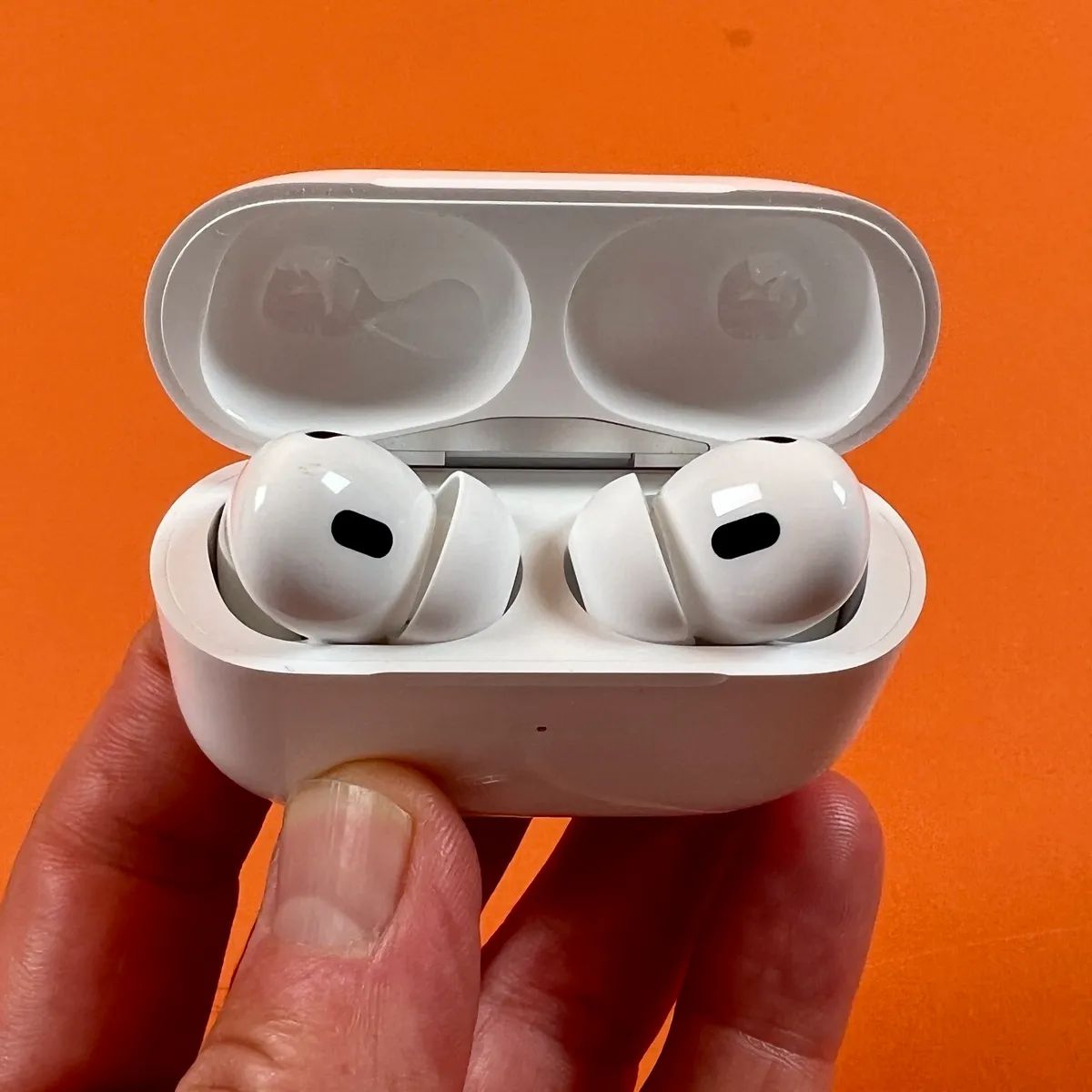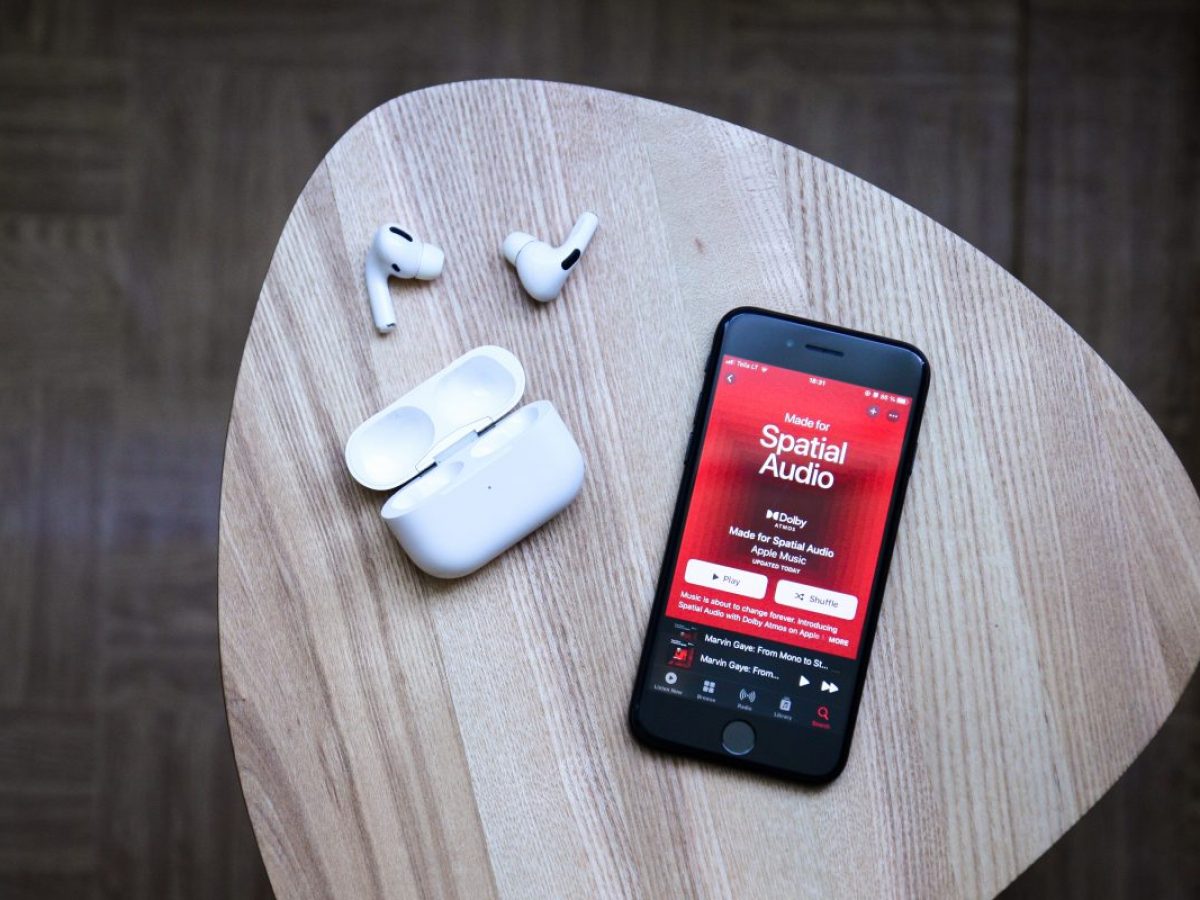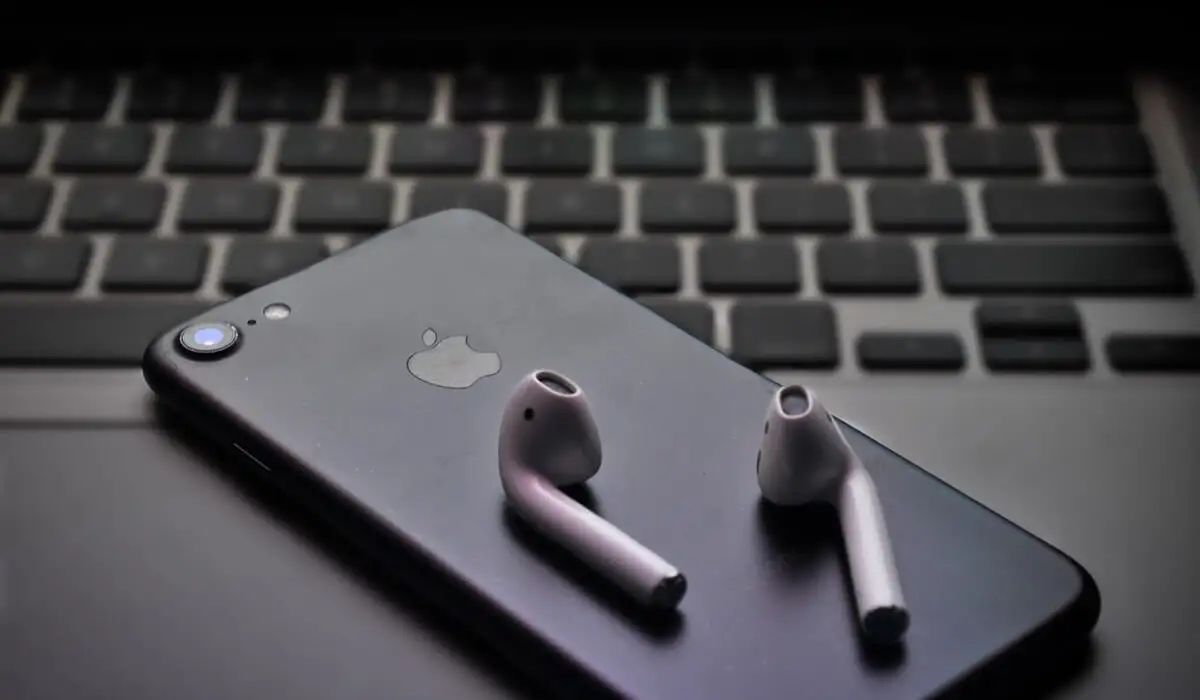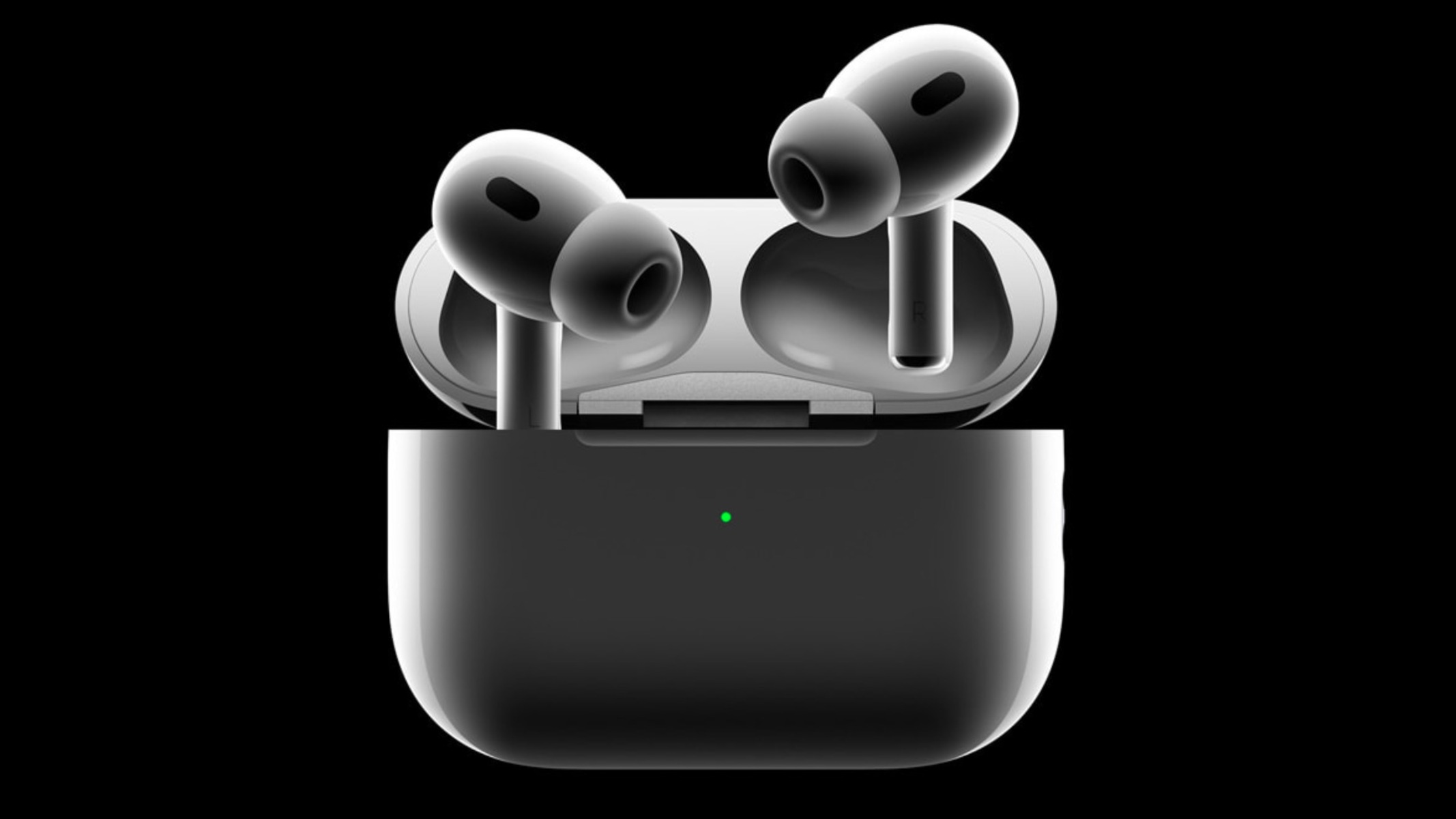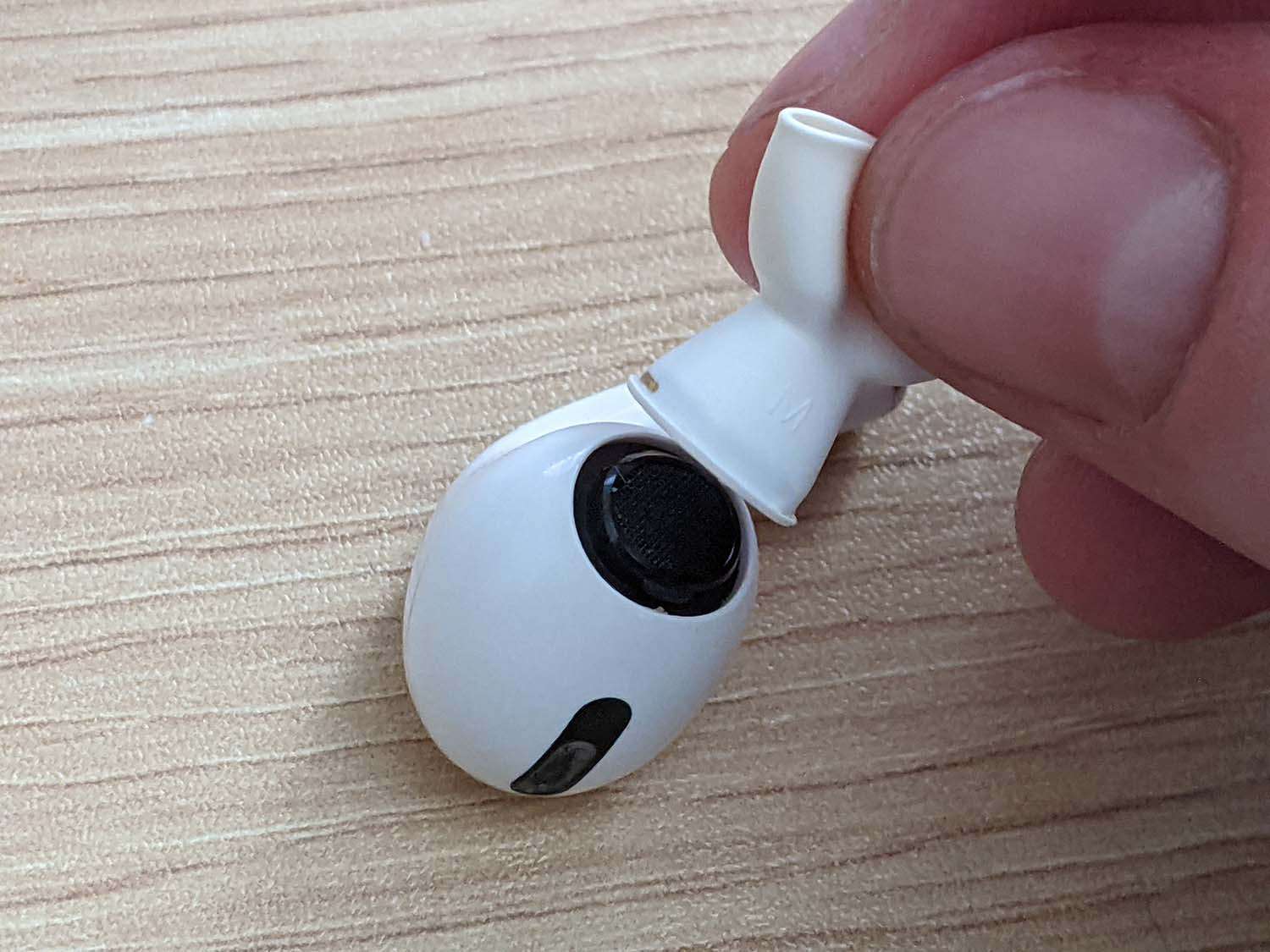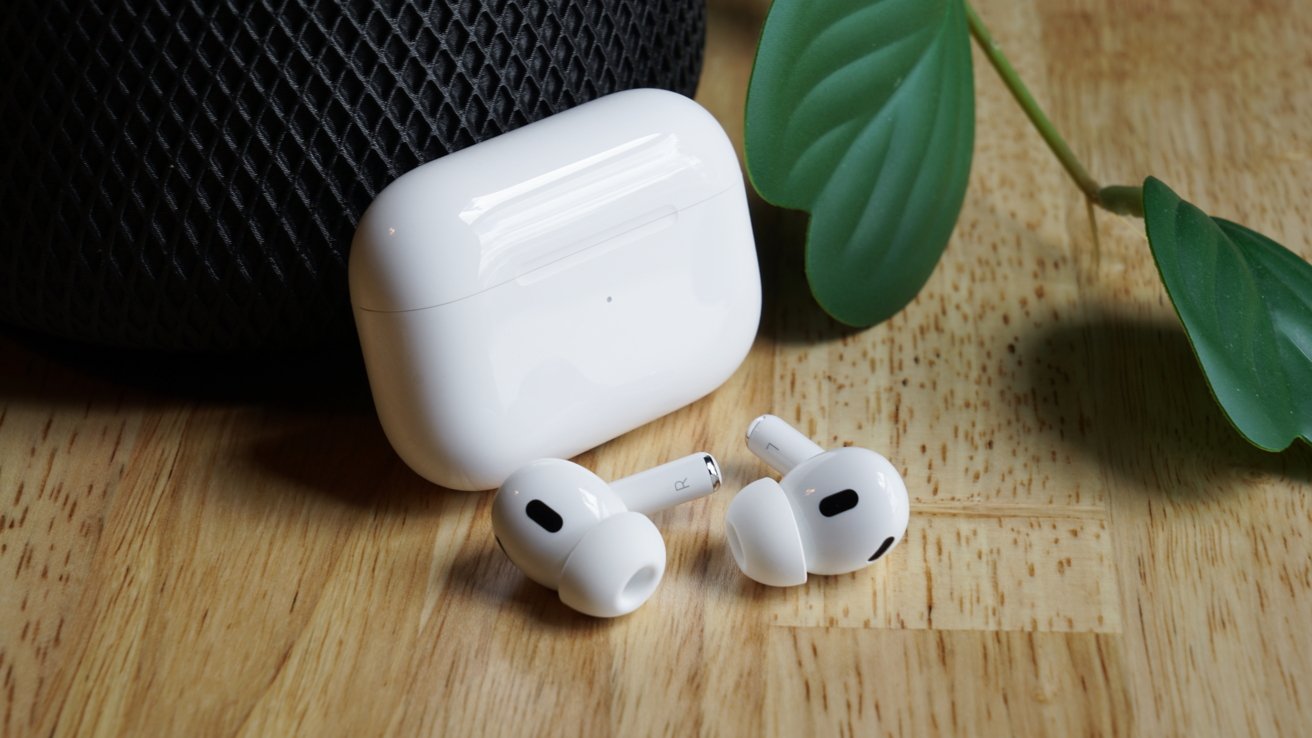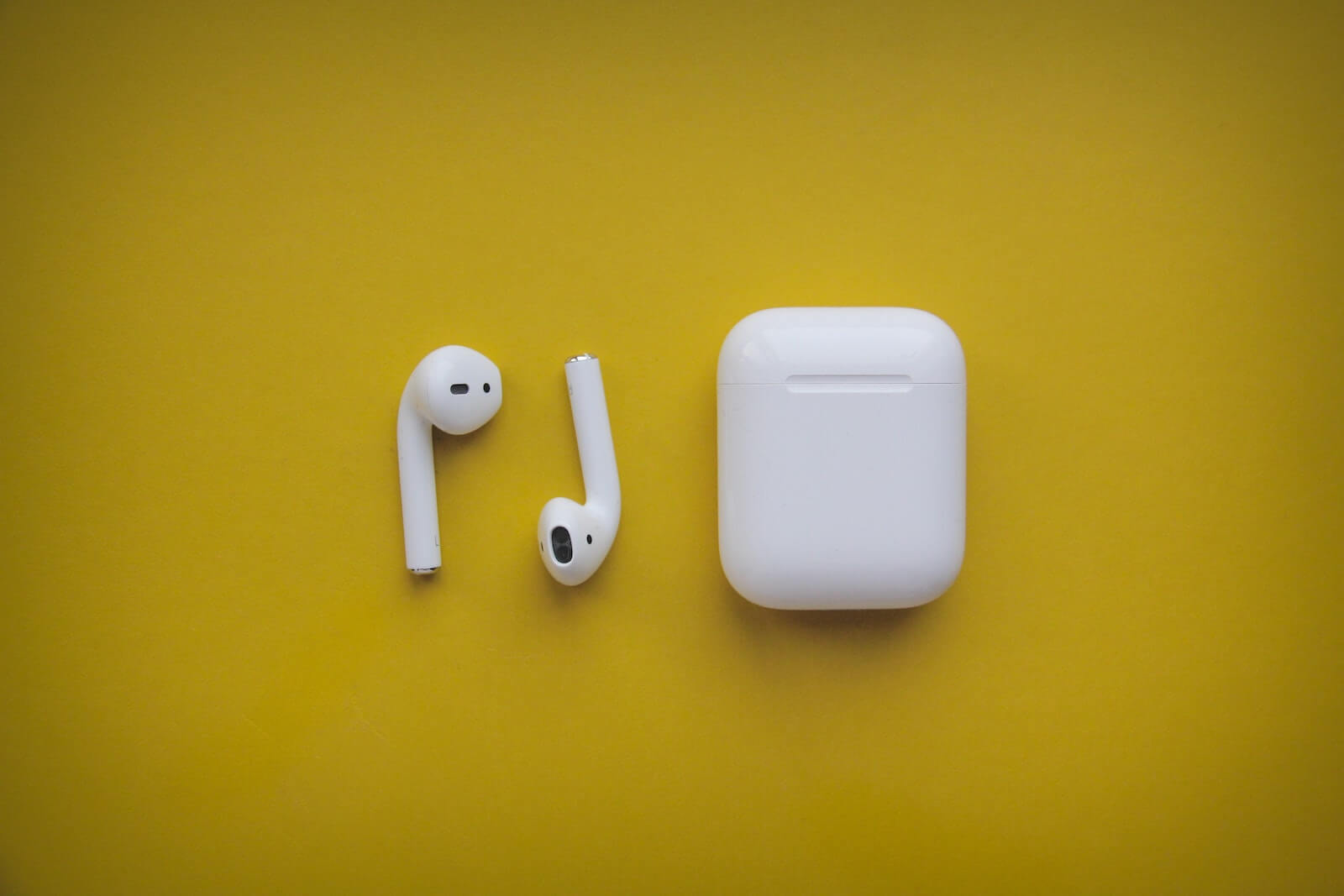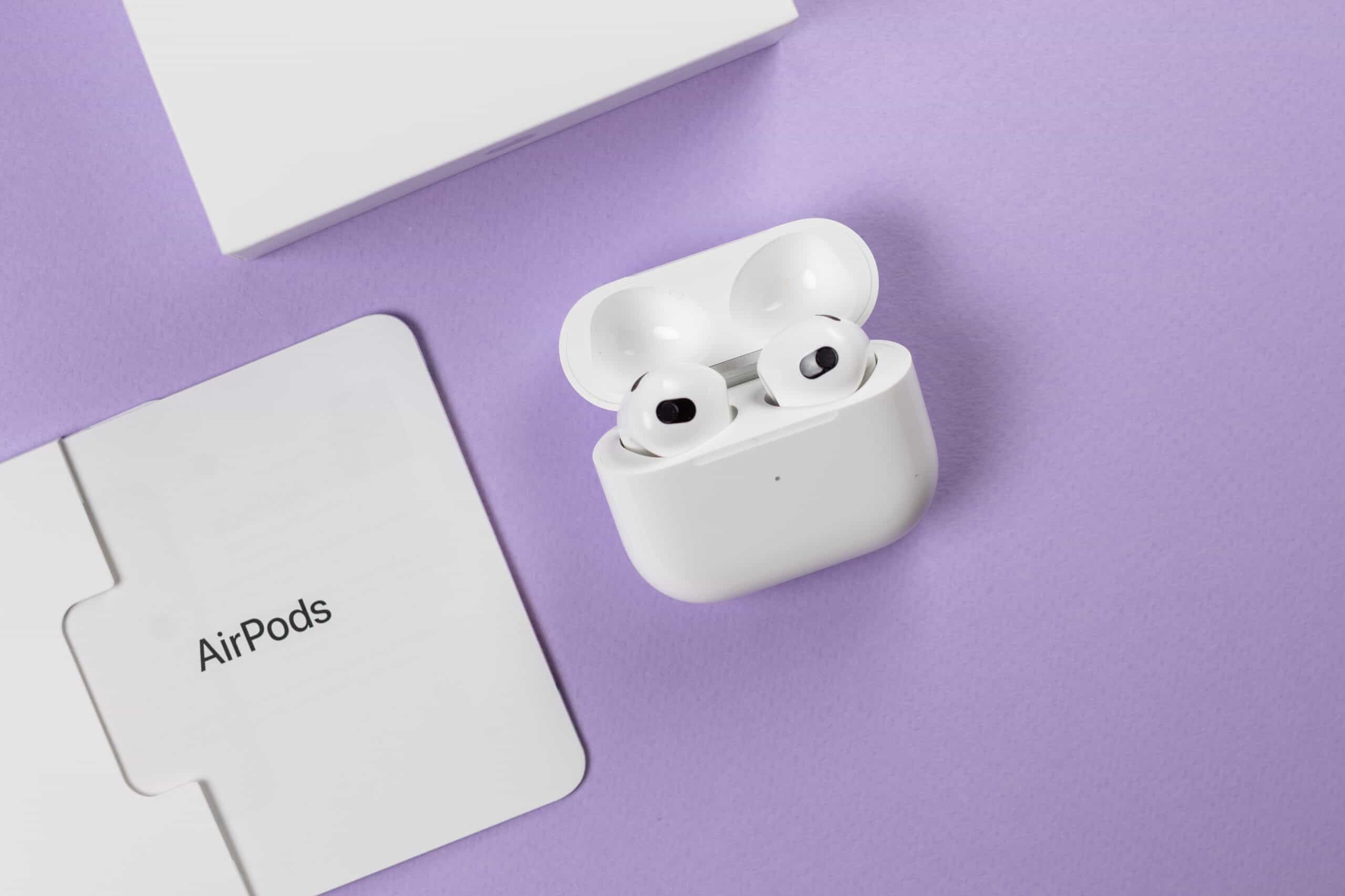Introduction
Having a pair of AirPods can enhance your audio experience by providing wireless and convenient listening capabilities. However, it can be frustrating when only one AirPod is working while the other remains silent. This issue is more common than you might think and can be caused by various factors.
In this article, we will explore the possible reasons why only one AirPod is working and provide troubleshooting steps to help you resolve the issue. Whether you’re a music lover, podcast enthusiast, or someone who relies on AirPods for important phone calls, understanding why this problem occurs and how to fix it is essential.
Before diving into the troubleshooting steps, it’s important to note that AirPods are a delicate piece of technology, and even the simplest issues can cause disruption in functionality. By following the steps outlined in this article, you can minimize the frustration and get both AirPods working again in no time.
So, let’s explore the common reasons behind this issue and learn how to troubleshoot and fix it, ensuring that you can fully enjoy your AirPods once more.
Possible Reasons Why Only One AirPod Is Working
When you find yourself in a situation where only one of your AirPods is working, it’s important to identify the root cause before attempting any troubleshooting. Here are some possible reasons why this issue occurs:
- Dirty or Blocked AirPod Speaker: Over time, debris, earwax, or dust particles can accumulate on the speaker mesh of your AirPods, restricting sound output. This can cause one AirPod to sound muffled or reduce the volume significantly.
- Connection Issues: Connectivity problems between your AirPods and the connected device can lead to sound issues. This can occur due to Bluetooth interference, distance from the device, or outdated firmware.
- Battery Problems: If your AirPods have different levels of battery charge, it is possible that one AirPod has drained its battery completely or is not charging properly. This can result in the silent AirPod while the other one continues to function.
- Software Glitches: Sometimes, software bugs or glitches in the operating system of your connected device can cause disruptions in the audio output of your AirPods. This can be resolved by updating the firmware or troubleshooting the software settings.
- Physical Damage: Accidental drops, water exposure, or rough handling can cause physical damage to your AirPods. This damage can impact the functionality of one or both AirPods, leading to sound issues.
Keep in mind that these are just possible reasons, and the actual cause can vary in each case. Understanding these potential factors can help you narrow down the problem and take appropriate action to fix it. In the next section, we will explore various troubleshooting steps to resolve the issue and get both AirPods working together again.
Dirty or Blocked AirPod Speaker
One of the most common reasons why only one AirPod is working is due to a dirty or blocked speaker. Over time, dirt, debris, earwax, or dust particles can accumulate on the speaker mesh of your AirPods, obstructing the sound output.
To address this issue, follow these steps:
- Start by inspecting the speaker mesh of the affected AirPod. Look for any visible debris or buildup that might be causing the issue.
- If you notice any obstruction, gently clean the speaker mesh using a soft, lint-free cloth. Avoid using water, cleaning agents, or abrasive materials, as they can damage the AirPods.
- For stubborn dirt or wax buildup, you can use a dry, soft-bristled toothbrush to gently brush away the debris from the speaker mesh. Be cautious not to apply too much pressure to avoid damaging the AirPods.
- After cleaning, inspect the speaker mesh again to ensure that it is clear of any obstructions.
Once you have cleaned the speaker mesh, test the AirPods by playing audio on your connected device. Check if both AirPods are now producing sound. If the problem persists, proceed to the next troubleshooting step.
Remember, regular maintenance and cleaning of your AirPods can prevent the accumulation of debris and ensure optimal sound quality. It is recommended to clean the speaker meshes of your AirPods periodically to prevent issues like one AirPod not working.
Connection Issues
Another potential reason why only one AirPod is working is due to connection issues between your AirPods and the connected device. These issues can arise from various factors, such as Bluetooth interference, distance from the device, or outdated firmware.
To troubleshoot and fix connection issues, follow these steps:
- Ensure that your AirPods are properly paired with your device. Go to the Bluetooth settings on your device and check if both AirPods are recognized and connected.
- If the connection seems weak or unstable, try moving closer to your device. Sometimes, increased distance between your AirPods and the device can weaken the Bluetooth signal strength.
- If there are other Bluetooth devices nearby, they may be causing interference. Move away from other Bluetooth devices or turn them off, then check if the issue is resolved.
- Check for any firmware updates for your AirPods. Apple periodically releases firmware updates that can improve the connectivity and performance of your AirPods. Ensure that your AirPods are updated to the latest firmware version.
- If the problem persists, you can try disconnecting and reconnecting your AirPods from your device. Forget the device in the Bluetooth settings, then re-pair the AirPods and test if both are working.
By going through these troubleshooting steps, you can address common connection issues that may cause one AirPod to stop working. If the issue persists, proceed to the next troubleshooting step to explore other possible solutions.
Battery Problems
Battery problems can also contribute to the issue of only one AirPod working. If there is a significant difference in the battery levels of the two AirPods, it can result in one AirPod not functioning while the other continues to operate.
To address potential battery-related issues, follow these steps:
- Place both AirPods in the charging case and ensure that they are properly aligned with the charging pins.
- Connect the charging case to a power source using the provided Lightning cable.
- Allow the AirPods to charge for at least 15 minutes to ensure that they have enough battery power.
- After charging, remove the AirPods from the case and test if both are working. If not, proceed to the next step.
- If the issue persists, you may need to reset the AirPods. Place them back in the charging case and keep the lid open. Press and hold the setup button on the back of the case until the LED light on the front starts flashing white. Then, pair the AirPods with your device again and check if both are functioning properly.
By charging and resetting the AirPods, you can often resolve battery-related issues that may cause one AirPod to stop working. However, if the problem persists, continue with the next troubleshooting steps to explore other potential solutions.
Software Glitches
Software glitches in the operating system of your connected device can also be a possible cause of only one AirPod working. These glitches can interfere with the audio output and cause one AirPod to remain silent.
To troubleshoot and address software-related issues, follow these steps:
- Check for any available firmware updates for your AirPods. Keep in mind that firmware updates are specific to Apple devices. Ensure that your AirPods are updated to the latest firmware version, as these updates often include bug fixes and improvements to performance.
- Verify that your connected device is running the latest software version. Check for any available updates and install them if necessary.
- If the issue persists, try disconnecting and reconnecting your AirPods to your device. Go to the Bluetooth settings on your device, forget the AirPods, then re-pair them and test if both are working properly.
- If the problem continues, you can try resetting the network settings or the audio settings on your device. This can help resolve any software-related glitches that may be affecting the functionality of your AirPods.
By ensuring that your AirPods and connected device are up to date and trying these troubleshooting steps, you can often address software-related issues that may cause one AirPod to not work. However, if the problem persists, continue with the next troubleshooting steps to explore other potential solutions.
Physical Damage
Physical damage to your AirPods can also be a possible reason for only one AirPod working. Accidental drops, water exposure, or rough handling can cause damage to the internal components of your AirPods, which can affect their functionality.
If you suspect physical damage, follow these steps:
- Inspect your AirPods for any visible signs of damage, such as cracks, dents, or water ingress.
- If you notice any damage, it is recommended to contact Apple Support or visit an authorized service center for further assistance. They will be able to assess the extent of the damage and provide appropriate solutions.
- If your AirPods are still under warranty, you may be eligible for a replacement or repair at no additional cost. Check the warranty status of your AirPods and contact Apple Support accordingly.
- If your AirPods are not under warranty, you may have the option to pay for out-of-warranty repair or replacement services.
It’s important to note that attempting to repair physical damage yourself may further compromise the functionality of your AirPods. It’s best to seek professional assistance to ensure proper diagnosis and repair.
If you have ruled out physical damage as the cause and the problem persists, continue with the next troubleshooting steps to explore other potential solutions.
How to Troubleshoot and Fix the Issue
Now that we have explored the possible reasons why only one AirPod is working, let’s delve into the troubleshooting steps to help you resolve the issue and get both AirPods working together again.
To troubleshoot and fix the issue, follow these steps:
- Clean the AirPods: Start by inspecting and cleaning the speaker mesh of your AirPods, as dirt or debris can block sound output. Use a soft, lint-free cloth or a dry, soft-bristled toothbrush to gently remove any buildup from the speaker mesh.
- Reconnect the AirPods: Ensure that your AirPods are properly paired and connected to the device. Try disconnecting and reconnecting them from the Bluetooth settings to establish a fresh connection.
- Charge and Reset the AirPods: Place both AirPods in the charging case and ensure they are properly aligned with the charging pins. Connect the case to a power source using the provided Lightning cable for at least 15 minutes. If the issue persists, try resetting the AirPods by pressing and holding the setup button on the back of the case until the LED light on the front flashes white.
- Update Firmware and Software: Check for any available firmware updates for your AirPods and install them. Additionally, ensure that your connected device is running the latest software version to minimize compatibility issues.
- Seek Professional Help: If none of the above steps resolve the issue, and if you suspect physical damage or your AirPods are still not working properly, it is recommended to contact Apple Support or visit an authorized service center for further assistance. They can provide expert guidance and solutions specific to your AirPods.
By following these troubleshooting steps, you can often identify and resolve the issue of only one AirPod working. However, if the problem persists or you are unable to determine the cause, seeking professional help is the best course of action to ensure a proper diagnosis and solution.
Clean the AirPods
One of the initial steps to troubleshoot the issue of only one AirPod working is to ensure that they are clean and free from any debris or blockages that might affect the sound output. Over time, dirt, earwax, and other particles can accumulate on the speaker mesh and affect the quality of the audio.
To clean your AirPods, follow these steps:
- Inspect the speaker mesh of both AirPods for any visible dirt or buildup. If you notice any obstructions, it is important to clean them to restore optimal sound quality.
- Use a soft, lint-free cloth to gently wipe the speaker mesh and remove any surface-level dirt or debris. Avoid using excessive force or pressing too hard, as it could damage the delicate components of the AirPods.
- If the dirt or buildup is stubborn, you can moisten the cloth slightly with water or isopropyl alcohol. Make sure to wring out any excess liquid and ensure that the cloth is only slightly damp.
- Gently wipe the speaker mesh again with the damp cloth, being careful not to let any moisture seep into the AirPods’ openings or vents.
- For hard-to-reach areas or stubborn dirt, you can use a dry, soft-bristled toothbrush. Gently brush the speaker mesh in circular motions to dislodge any particles, being cautious not to apply too much pressure.
- After cleaning, let the AirPods air dry for a few minutes to ensure they are completely dry before returning them to the charging case or using them.
Regularly cleaning your AirPods speaker mesh can prevent the accumulation of dirt and earwax, which can impede sound quality and lead to one AirPod not working. By following these cleaning steps, you can often improve the audio performance of both AirPods.
Reconnect the AirPods
If cleaning the AirPods did not resolve the issue of one AirPod not working, the next troubleshooting step is to reconnect them to your device. Sometimes, connectivity issues can cause one AirPod to lose its connection while the other continues to function normally.
To reconnect your AirPods, follow these steps:
- Open the Bluetooth settings on your device and locate the list of paired devices.
- Find your AirPods in the list and tap on the “i” or “info” icon next to their name.
- In the AirPods settings menu, look for the option to “Forget This Device” or “Disconnect”. Tap on it to disconnect your AirPods from the device.
- Once the AirPods are disconnected, place them back in the charging case.
- Close the lid of the charging case and wait for a few seconds.
- Open the lid of the charging case and press and hold the setup button on the back of the case until the LED light on the front starts flashing white.
- On your device, go back to the Bluetooth settings and select your AirPods from the list of available devices to reconnect them.
After reconnecting the AirPods, play some audio on your device to check if both AirPods are now working properly. By resetting the connection between your device and the AirPods, you can often resolve connectivity issues that may result in one AirPod not playing sound.
If the problem persists, continue with the next troubleshooting steps to explore other potential solutions.
Charge and Reset the AirPods
If cleaning and reconnecting the AirPods did not resolve the issue of only one AirPod working, it’s time to focus on the battery and perform a reset to refresh the connection between the AirPods and your device.
To charge and reset your AirPods, follow these steps:
- Place both AirPods back into the charging case and ensure that they are properly aligned with the charging pins.
- Connect the charging case to a power source using the provided Lightning cable and let the AirPods charge for at least 15 minutes.
- During the charging process, check the status light on the front of the charging case. It should indicate that the AirPods are charging.
- Once the AirPods have charged for a sufficient amount of time, remove them from the charging case and place them in your ears.
- If the issue persists, perform a reset by pressing and holding the setup button on the back of the charging case until the LED light on the front starts flashing white.
- Now, go to your device’s Bluetooth settings and forget the AirPods. To do this, tap on the “i” or “info” icon next to the AirPods’ name and select “Forget This Device” or “Disconnect”.
- After forgeting the AirPods, put them back in the charging case and close the lid for a few seconds.
- Open the lid of the charging case and place the AirPods near your device. The setup animation should appear on your device’s screen.
- Follow the on-screen instructions to reconnect and pair the AirPods with your device.
By charging and resetting the AirPods, you not only ensure that they have sufficient battery levels but also clear any potential glitches or connectivity issues. This process often helps resolve issues where one AirPod is not working. After completing these steps, check if both AirPods are now functioning properly.
If the problem persists, proceed to the next troubleshooting steps to explore other potential solutions.
Update Firmware and Software
If previous steps did not resolve the issue of only one AirPod working, it’s worth checking for any available firmware updates for your AirPods and ensuring that your connected device is running the latest software version. Updating the firmware and software can often address compatibility issues and improve the overall performance of your AirPods.
To update the firmware and software, follow these steps:
- Check for any available firmware updates for your AirPods. This can be done by connecting your AirPods to your device and opening the “Settings” app. Navigate to “General” and then “About” and check for any available updates for your AirPods.
- If an update is available, follow the instructions to install it. Keep in mind that your AirPods need to be connected to a power source and within range of your connected device during the update process.
- Additionally, check for any software updates for your connected device. Whether you’re using an iPhone, iPad, or Mac, go to the respective “Settings” or “System Preferences” app and look for available software updates.
- If updates are available, download and install them on your device.
- Once the firmware and software updates are complete, restart your device and re-establish the connection with your AirPods.
By ensuring that both the AirPods and your connected device are running the latest firmware and software, you can often address compatibility issues and improve the performance of your AirPods. After completing these steps, check if both AirPods are now functioning as expected.
If the issue persists, proceed to the next troubleshooting steps to explore other potential solutions.
Seek Professional Help
If you have tried all the previous troubleshooting steps and are still facing the issue of one AirPod not working, it may be time to seek professional assistance. Professional help can provide you with expert guidance and solutions tailored to your specific AirPods and situation.
Here are a few options to consider:
- Contact Apple Support: Apple support is a valuable resource when it comes to troubleshooting and resolving issues with your AirPods. You can reach out to them through their official website, support app, or by calling their customer support directly. Explain the issue you are facing, the troubleshooting steps you have already tried, and they will provide you with further instructions or options for repair.
- Visit an Authorized Service Center: Apple has authorized service centers where trained technicians can diagnose and repair issues with your AirPods. They have the expertise and equipment to handle various repairs, including internal component replacements. Check Apple’s website for a list of authorized service centers near you.
- Consider Warranty or Out-of-Warranty Services: If your AirPods are still within the warranty period, you may be eligible for free repair or replacement services. Check the warranty status of your AirPods and, if applicable, take advantage of the warranty coverage. If your AirPods are no longer covered by warranty, you may have the option to pay for out-of-warranty repair or replacement services.
By seeking professional help, you can ensure a proper diagnosis of the issue and access to solutions that may not be available through general troubleshooting steps. Professionals have the knowledge and tools to handle complex repairs or replacements, providing you with the best possible outcome for your AirPods.
If you have exhausted all the troubleshooting options and the problem persists, consulting a professional is the most reliable way to find a resolution.
Conclusion
Experiencing the issue of only one AirPod working can be frustrating, but by following the troubleshooting steps outlined in this article, you can often resolve the problem and restore the functionality of both AirPods.
We explored various possible reasons for the issue, including dirty or blocked speaker mesh, connection issues, battery problems, software glitches, and physical damage. By identifying the underlying cause, you can apply targeted solutions to address specific issues.
Remember to clean your AirPods regularly to prevent debris buildup and optimize sound quality. Reconnecting AirPods to your device, charging and resetting them, and ensuring that firmware and software are up to date can often resolve connectivity and compatibility problems.
If all else fails, seeking professional help from Apple Support or authorized service centers is recommended. They can provide expert assistance and guidance tailored to your AirPods and situation.
By following these troubleshooting steps and seeking appropriate help when needed, you can enhance your AirPods experience and enjoy the freedom of wireless audio once again.







